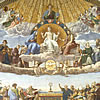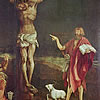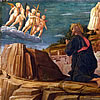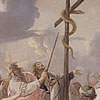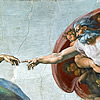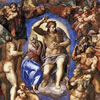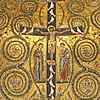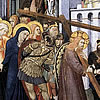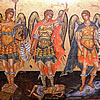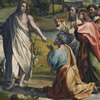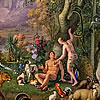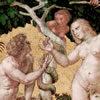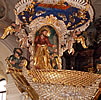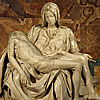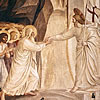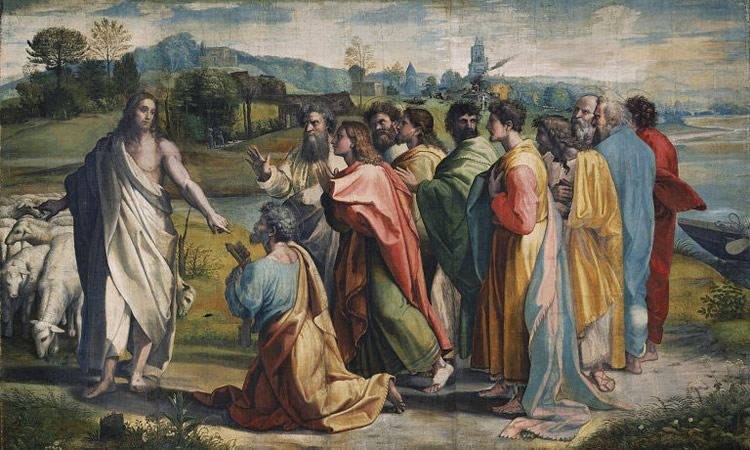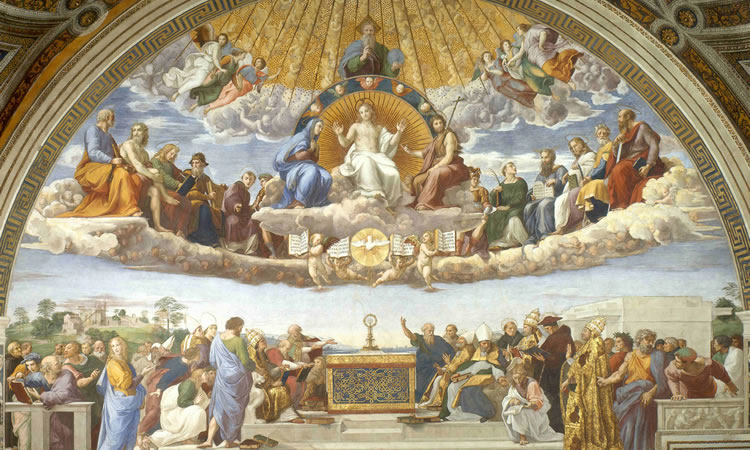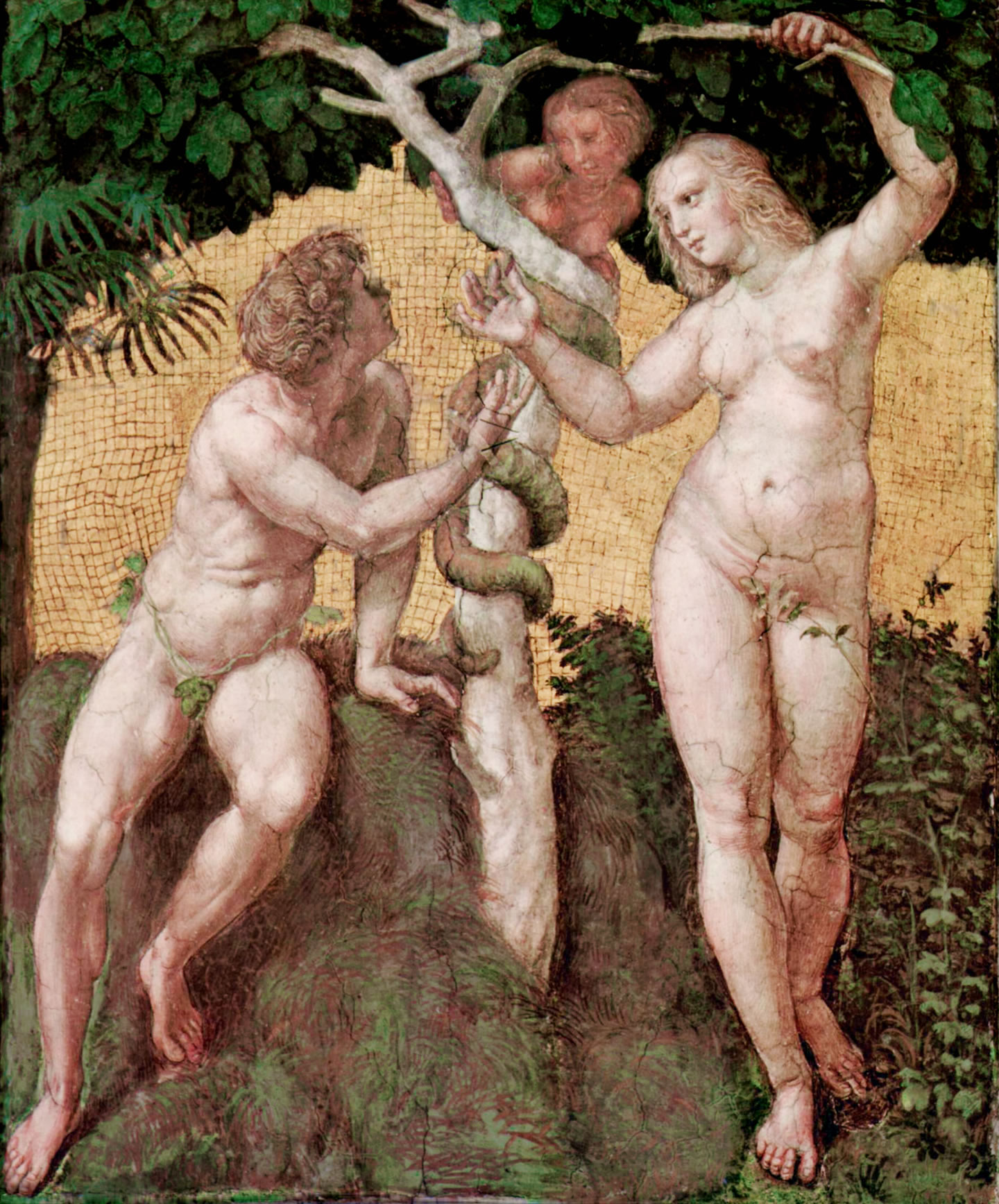

Adam and Eve (and the love triangle in Eden)
We all love a good melodrama. In surveys of television genres, it is consistent that dramas and soap operas are the runaway most popular and far ahead from comedies that come a distant second. If someone dropped a trailer for a new soap that featured a love triangle jeopardized by jealousy, peppered with lies, and ends in death, the public would probably binge watch the series in a few days. However, if you told them that it is the story of Adam and Eve’s fall in Eden, they might react with disbelief. But, that’s what the story of the Fall is – at least that is one way it was read.
We say this because if we search for visual renderings of the temptation in Eden, we will find that an overwhelming number of illustrations and painting depict the serpent as a woman. The featured art piece in this article is a high reinassance style fresco by Raphael depicting a love triangle where a female serpent comes in between Adam and Eve.
We can see the same drama being portrayed in the Sistine Chapel that Michelangelo finished in 1512. At the left door of the West Facade of Notre Dame, Paris, that was completed in 1345, we can also see a sculpture of a female serpent on the pillar that Mary stands on. Many earlier paintings and illustrations on old illuminated Bibles, before the first millennium also show the serpent rendered as a woman for the same reason.
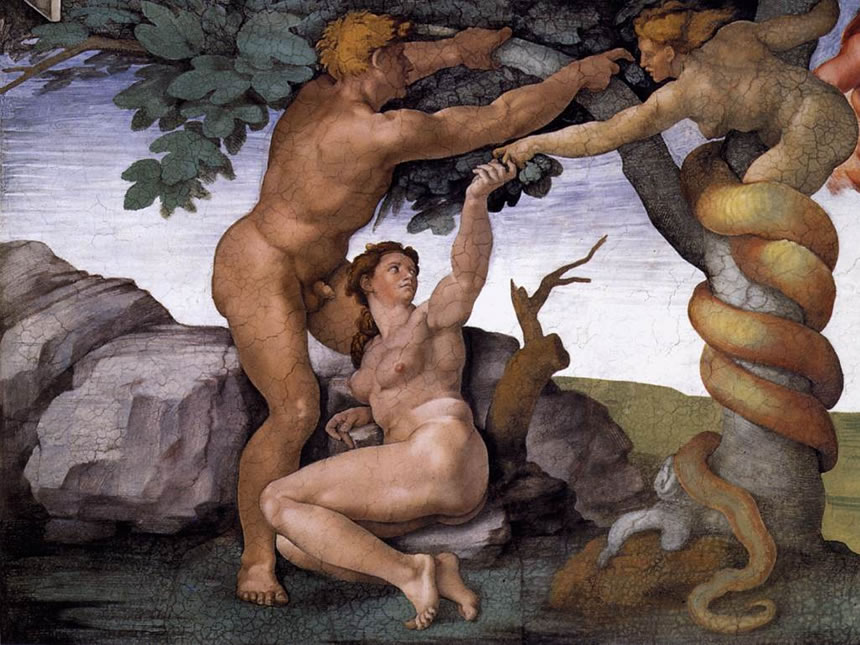
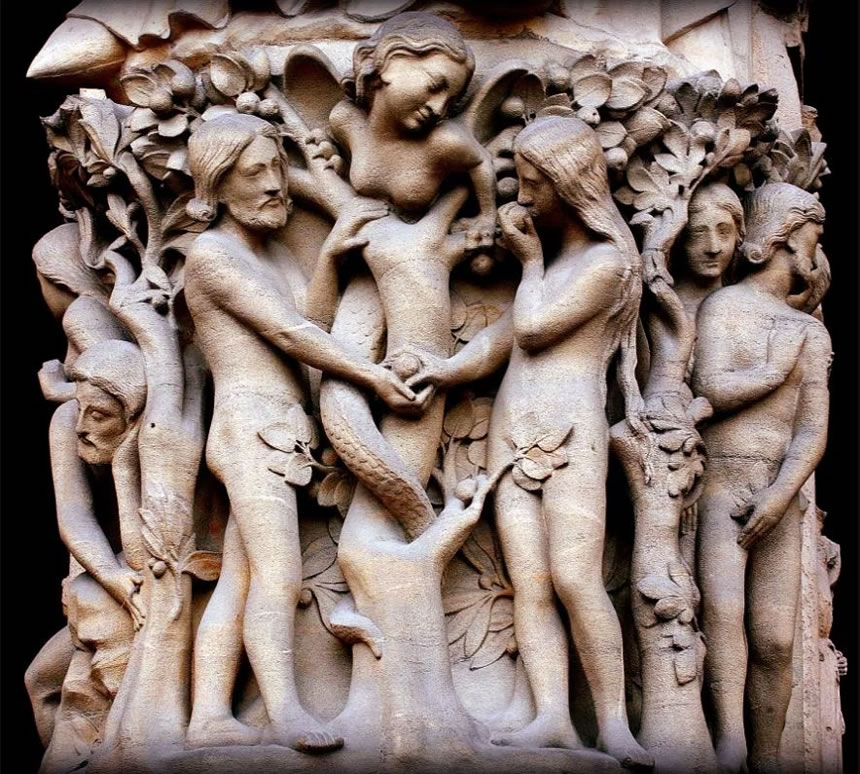
This representation of the serpent has become so popular that some people have even given her a name: Lilith, the first wife of Adam. While this is said to have come from Sumerian or Mesopotamian myths that made its way into medieval texts called, “The Alphabet of Ben Sira,” the Church, however, has never gone so far as to label her that way. Instead, one way early Christians read the Fall is through a love triangle where Adam has two women vying for his love. How did early Christians see the temptation as a soap opera? A quick review of Genesis will give us the clues:
18 The LORD God said: It is not good for the man to be alone. I will make a helper suited to him.
19 So the LORD God formed out of the ground all the wild animals and all the birds of the air, and he brought them to the man to see what he would call them; whatever the man called each living creature was then its name.
20 The man gave names to all the tame animals, all the birds of the air, and all the wild animals; but none proved to be a helper suited to the man.
21 So the LORD God cast a deep sleep on the man, and while he was asleep, he took out one of his ribs and closed up its place with flesh.
22 The LORD God then built the rib that he had taken from the man into a woman. When he brought her to the man,
23 the man said: “This one, at last, is bone of my bones and flesh of my flesh; This one shall be called ‘woman,‘ for out of man this one has been taken.”
24 That is why a man leaves his father and mother and clings to his wife, and the two of them become one body.
– Genesis 2:18-24
1 “Now the snake was the most cunning of all wild animals that the Lord God had made.” – Genesis 3:1
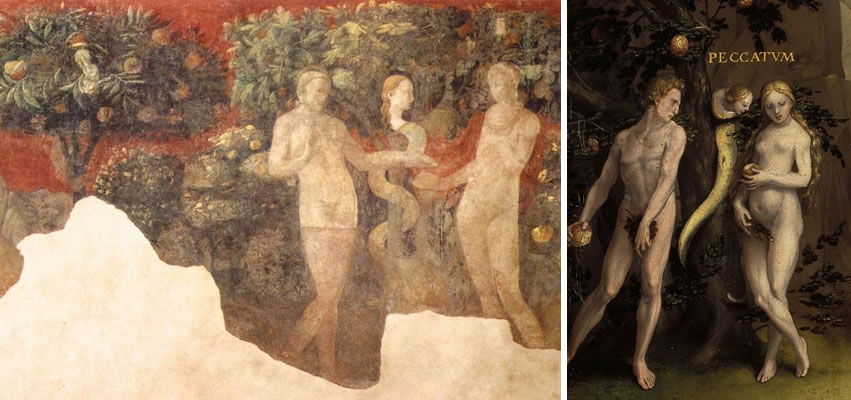
From these few verses, we learn that the drama started out when God produced different wild animals and birds in an effort to make a helper for Adam. (Verses 18-19.) The contenders were presented to Adam but he didn’t find any of these suitable as a partner. (Verses 19-20) So, God created Eve from Adam’s side, and he chose her as his partner in marriage. (Verses 21-24)
We have to remember that Scripture did not originally have chapters and verse numbers. These were added on later by scribes. So, when we read the next verse after Eve became the wife of Adam, we find that the snake had been lurking all along. She was the most cunning, Scripture says. She is the wisest and therefore the best choice, the serpent thought. In her mind, she was the one Adam should have chosen as partner for no one could be better or smarter. And, when Adam did not choose the serpent, her pride was pricked to the point of bitter rivalry.
In classic soap opera spurned-lover mode, she vowed to show Adam his folly: (fade in ominous music in the background) “If I can’t have him, I will destroy her. I will tell her lies and she will fall for them. That will show him she isn’t wise and deserving of his love. I will make him regret that he chose her, for when she dies, she will make him die with him. If I can’t have him, no one will.”
We see this drama unfold when Eve, even with all the graces God had given her, puts up a good fight but succumbs to lies – something she had never faced before. True to the serpent’s sneaky plan, Adam blamed Eve as the cause of his disobedience when God asked him if he had eaten of the forbidden fruit. Adam answered, “The woman whom you put here with me – she gave me the fruit from the tree, so I ate it.” As a consequence, death entered into human nature. Whereas Eve didn’t have to experience death at the end of her life, she now must, and so must Adam. Adam must have regretted choosing Eve for if he didn’t pick her, they wouldn’t have to die. In the end, the scheming of the serpent shows us how hell has no fury like a woman scorned. (Could this be how Shakespeare thought of this famous line?)

But the drama doesn’t turn out to be a tragedy because God promised that the woman and the man will one day strike the head of the serpent – a fitting end to one whose vainglorious wit and pride has gone to its head. In Scripture, God’s justice always fits the crime, and so the serpent’s sentence is that a woman shall bring forth a man who would smite the serpent’s pride. This materializes in the Passion where, with all malice, the serpent plotted the death of Jesus, unknowing that it is precisely this encounter with death that Christ emerges victorious. In the end, Christ shows the serpent that he, the man, was more clever for using the serpent’s scheme against herself. What that has done to the serpent’s pride, we can only imagine.
The drama has not ended yet. This opera continues day after day, year after year until the end of time with the serpent lurking in the background. With a pricked pride and wanting all creation to go down with her, we are characters in the story continually courted by the serpent to fall for her lies. But we already know how it all ends for Christ has revealed it: he will come in glory and the earth will be renewed. The question begged to be asked is: when the cast is shown at the end credits of the series, what will it say is the role we played? You and I are still determining that today.






